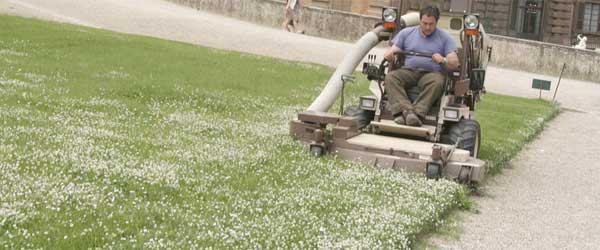You youngsters don’t know how easy you’ve got it. Kits, outsourcing and improved practices are making research easier and easier. At least in theory (who are we kidding?).
In the old days things were much tougher, and many wiley old scientists bear the scars, mental and physical, of carrying out techniques that were mind numbing, frustrating or just plain dangerous. Now the Bitesize Bio team is (generally) not THAT old – or so we tell ourselves – but we put our heads together and to think of the techniques we are most glad we don’t have to use anymore. And, together with a some suggestions from our Twitter followers, we came up with a top 10 .
Please feel free to share your own, especially if you are a REALLY old scientist and remember some of the especially nasty stuff!
1. DNA sequencing. In the old days DNA sequencing meant pouring massive gels, slopping around up to your armpits in P-32 phosphorus and reading the sequence by hand from the gel. We much prefer the “stick a tube in an envelope and send it off to the sequencing service” approach.
2. Making Oligos. Another revolution. Sending the sequence off to the oligo synthesis service is so much better than spending an eternity to (attempt to) make them yourself.
3. Phenol-chloroform extractions. No more smelly phenol in our labs, we’ve got spin columns (Thanks @Kyrsten_Jensen for this suggestion)
4. Packing protein purification columns. Buying them pre-made is so much easier (Thanks @Kyrsten_Jensen for this suggestion)
5. Electrophoresis with home-made electrophoresis apparatus. Electrifying! (although our home-made gel visualisation apparatus is pretty good!)
6. Northen Blots. Thank you bioinformatics.
7. Drying Agarose gels/SDS-PAGE gels for archiving. Thank you digital photography! (thanks @saxphile for this suggestion)
8. Adding mineral oil to PCR. Whoever invented heated lids in PCR machines was a genius (thanks @saxphile for this suggestion)
9. Home made minipreps. I may not have been the greenest-fingered scientist that ever lived but the failure rate of my home-made minipreps was pretty big, especially when I did many of them at one. Thank goodness for miniprep kits.
10. Pouring your own SDS-PAGE gels. This one, and I suppose many of the others above that advocate buying pre-made stuff, is controversial but in my experience is very cost-effective to buy in pre-made SDS-PAGE gels rather than pour your own. No wasted time on leaking gel apparatus or forgetting to add the Temed and the gels are nice and uniform.
So that’s we don’t miss doing in the lab. How about you?





